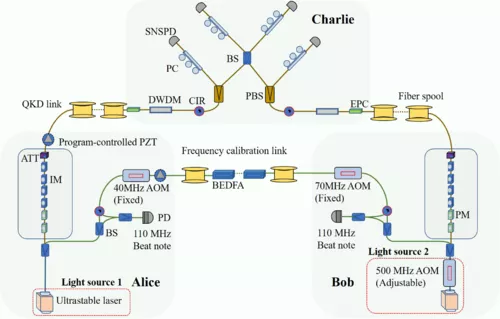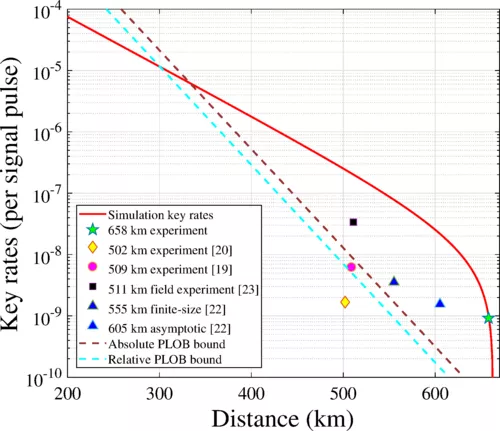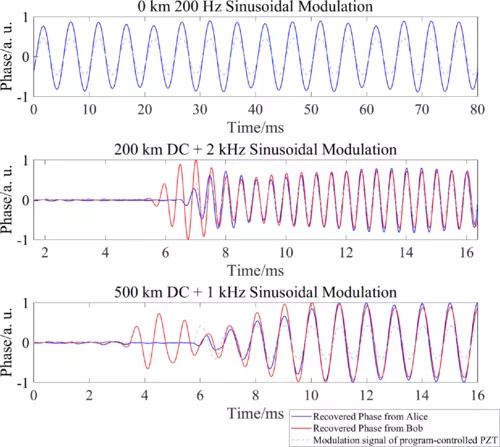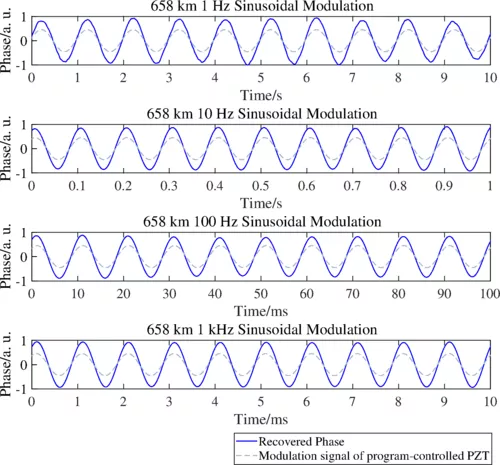Pan Jianwei and Zhang Qiang of University of science and technology of China cooperated with Wang Xiangbin and Liu Yang of Jinan Institute of quantum technology to develop a set of experimental system integrating quantum key distribution and optical fiber vibration sensing. While completing the distribution of optical fiber double field quantum key, they can realize 658km long-distance optical fiber sensing with positioning accuracy of 1km, which greatly breaks through the limitation that the distance of traditional optical fiber vibration sensing is difficult to exceed 100km. Relevant results were published in Physical Review express on May 2.


Schematic diagram of experimental device integrating quantum key distribution and optical fiber vibration sensing provided by University of science and technology of China
Optical fiber vibration sensor monitors the vibration information in the link by using the time, phase, amplitude and other information of optical signal in the optical fiber. It has the advantages of high sensitivity, fast response, simple structure and uniform distribution. It has a wide application prospect in the engineering fields of building structure health monitoring, oil and gas pipeline leakage monitoring, earthquake monitoring and so on. At present, the mainstream optical fiber vibration sensing scheme adopts the distributed acoustic sensing technology, which can accurately measure the vibration information generated at each position of the optical fiber, but the sensing distance is difficult to exceed 100 kilometers.
Quantum key distribution is based on the basic principles of quantum mechanics and combined with "one secret at a time" encryption method, which can realize unconditional and secure secure secure communication. Two field quantum key distribution protocol can not only achieve very high practical security, but also provide the possibility to exceed the working distance of general quantum key distribution protocol. It is considered to be the best scheme to realize ultra long-distance optical fiber quantum key distribution.
However, the two field quantum key distribution technology is demanding and requires the single photon interference of two remote independent lasers. The small deviation of light source frequency and any fluctuation of optical fiber link will accumulate phase noise and reduce the quality of single photon interference. Therefore, in the double field quantum key distribution experiment, it is necessary to detect and compensate the rapid phase change caused by fiber vibration.


Generally speaking, these phase change information will be "discarded" after the experiment. But in fact, these "redundant" information comes from the phase change caused by fiber vibration. By analyzing this information, the vibration signal of optical fiber link can be obtained. According to the time correlation of the measurement results of both sides of the communication, the vibration signal can be located to realize ultra long-distance optical fiber vibration sensing.
Pan Jianwei and Zhang Qiang, based on the "send or not send" two field quantum key distribution protocol proposed by Wang Xiangbin, use key technologies such as time-frequency transmission to accurately control the frequency of two independent lasers. In cooperation with Chen Min and Zhao Dongfeng of the University of science and technology of China, they used the additional phase reference light to estimate the rapid relative phase drift of the optical fiber, and recovered the external disturbance generated by the artificially controllable vibration source loaded on the optical fiber channel. Combined with the high count rate and low noise single photon detector developed by youlixing team of Shanghai Institute of Microsystems, Chinese Academy of Sciences, the 658 km long-distance optical fiber double field quantum key distribution is finally realized, and the optical fiber sensing test is successfully carried out in the system.
Hoi Kwong lo, an internationally renowned quantum cryptography expert and professor at the University of Toronto, commented on the work: "it is impressive to detect vibration at such a long distance." Giuseppe Marra, an expert in quantum precision measurement and the National Physical Laboratory of the UK, said: "in the future, the quantum cryptography network based on this new technology can provide a lot of earthquake related information."
Relevant paper information:< https://doi.org/10.1103/PhysRevLett.128.180502 >
